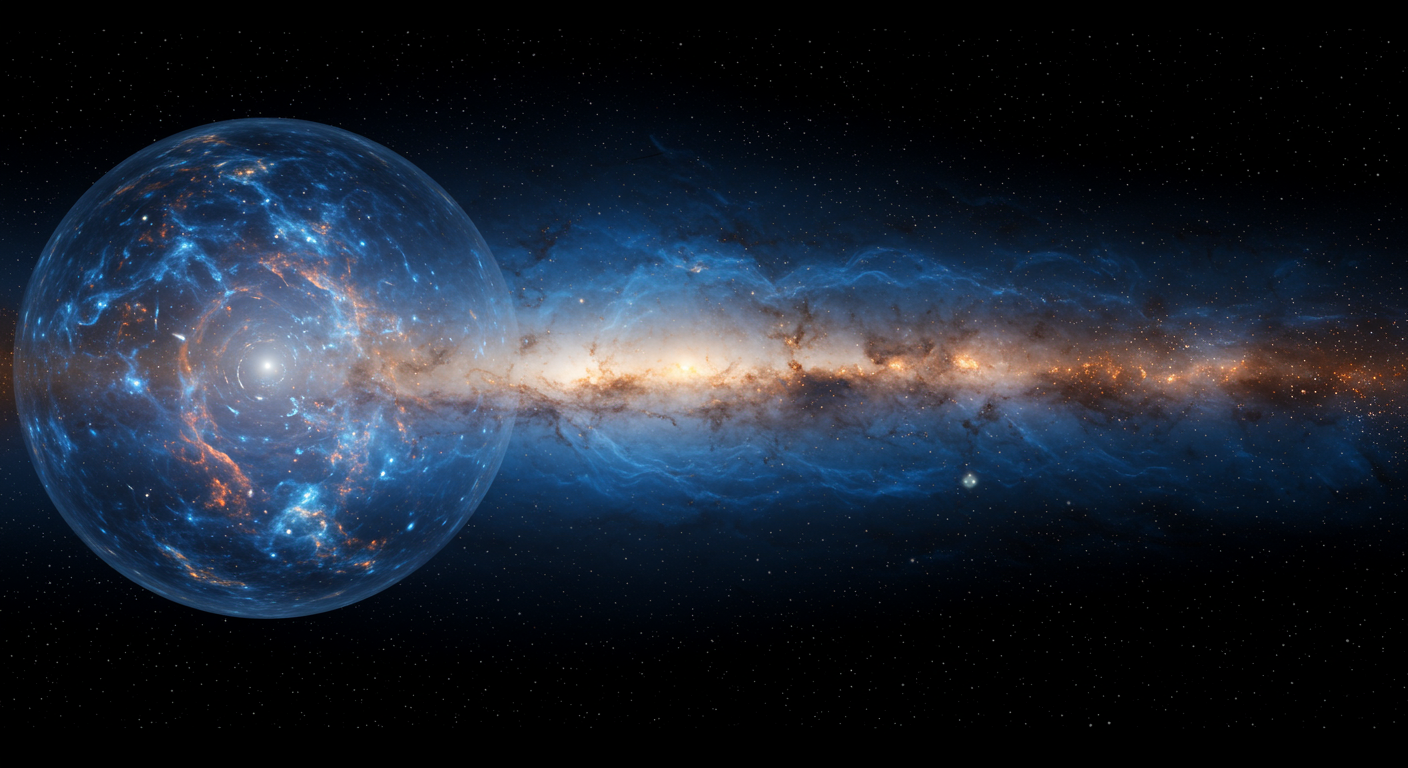The Bayesian Global Sky Model (B-GSM): A Calibrated Low Frequency Sky Model for EoR Applications

We are thrilled to feature a pivotal advancement in the quest to understand the early Universe: “The Bayesian Global Sky Model (B-GSM): A Calibrated Low Frequency Sky Model for EoR Applications,” detailed in 2504.04503. This significant work, spearheaded by lead author George Carter, alongside Will Handley, Mark Ashdown, and Nima Razavi-Ghods, introduces a novel, absolutely calibrated model of the diffuse Galactic foreground emission at frequencies below 408 MHz, specifically tailored for Epoch of Reionization (EoR) applications.
The Challenge of Unveiling the Cosmic Dawn
Detecting the faint cosmological 21cm signal from the EoR and Cosmic Dawn is an extraordinary challenge, primarily due to overwhelming foreground contamination, which can be 3-6 orders of magnitude brighter than the signal itself (10.1088/0034-4885/75/8/086901). These foregrounds are dominated by diffuse Galactic synchrotron radiation, with contributions from free-free emission and extragalactic radio sources. Accurate modeling and removal of this contamination are critical. However, existing sky models like the Global Sky Model (GSM) (10.1111/j.1365-2966.2008.13376.x) or the Low Frequency Sky Model (LFSM) (10.1093/mnras/stx1136) face limitations for low-frequency applications:
- They often neglect the significant variability and uncertainty in the calibration of underlying survey data (10.3847/1538-4357/abd558, 10.1093/mnras/stab1363).
- Many are primarily constructed using higher frequency data, which may not accurately represent low-frequency foreground characteristics.
- Traditional Principal Component Analysis (PCA) based methods for component separation typically do not provide robust uncertainty estimates on the predicted sky.
The B-GSM: A Bayesian Approach to Sky Modeling
The B-GSM, presented as the second paper in its series, tackles these challenges head-on with a sophisticated Bayesian framework. The methodology, building upon the simultaneous component separation and calibration algorithm introduced in the first B-GSM paper (2501.01417), leverages two independent datasets:
- Spatially Resolved Diffuse Emission Maps: A collection of ten publicly available survey maps covering frequencies between 45 MHz and 408 MHz. These maps, while providing spatial information, can have calibration inaccuracies.
- Absolute Temperature Data: Well-calibrated, though spatially limited, absolute temperature measurements from the EDGES radiometer, covering 40 MHz to 200 MHz.
A joint Bayesian analysis of these datasets is performed using nested sampling (10.1063/1.1835238), allowing the team to determine posterior distributions for:
- Spatially resolved diffuse emission components.
- Spectral parameters for this diffuse emission.
- Calibration corrections (both scale and zero-level) for each input survey map.
Critically, Bayesian model comparison (10.1080/00107510802066753) guides the selection of the optimal model parameterization, ensuring a data-driven approach. This novel methodology inherently quantifies uncertainties in predictions and ensures absolute calibration by anchoring to the EDGES data.
Key Findings and Contributions
The B-GSM yields several important results:
- Optimal Model: The low-frequency sky is best modeled by two distinct emission components, each characterized by a curved power-law spectrum. The first component exhibits a spectral index $\beta_1 = -2.633 \pm 0.002$ and curvature $\gamma_1 = 0.014 \pm 0.001$. The second component has $\beta_2 = -2.108 \pm 0.008$ and $\gamma_2 = -0.424 \pm 0.008$.
- Map Calibration: The analysis reveals necessary temperature-scale corrections for the input diffuse maps ranging from 1% to 29%, and zero-level adjustments from a few Kelvin to several hundred Kelvin. Notably, the Haslam 408 MHz map is found to be well-calibrated, requiring only a ~3% scale correction ($1.029 \pm 0.003$) and a zero-level adjustment of $0.91 \pm 0.05$ K. This finding for Haslam contrasts with some other recent analyses (e.g., 2409.06770), a discrepancy attributed by the authors to methodological differences in handling spatially varying calibration errors.
- Absolute Calibration Validated: Posterior predictions of the sky’s absolute temperature show excellent agreement with the independent EDGES data across all frequencies (45-200 MHz) and Local Sidereal Times (LSTs), with residuals typically below 3.2%. This confirms the B-GSM’s successful absolute calibration.
- Physical Interpretation: The first emission component appears to correspond to Galactic synchrotron emission. The second component, which sometimes shows non-physical negative temperatures in its amplitude map, is interpreted as modeling spatial variations in the synchrotron spectral index and potentially incorporates Galactic free-free emission.
While posterior sky predictions generally agree with observations within statistical uncertainty, discrepancies are largest in the Galactic plane, and residuals exhibit some structure, suggesting avenues for future model refinement.
Significance and Future Outlook
The B-GSM represents a significant step forward, providing the EoR and low-frequency radio astronomy community with a robustly calibrated sky model that includes comprehensive uncertainty quantification. This work by George Carter and collaborators directly addresses critical limitations of previous models.
The team outlines several exciting directions for future development:
- Improving calibration by accounting for spatial variations within individual maps, possibly by incorporating Northern Hemisphere data (e.g., from LEDA).
- Utilizing raw EDGES data for enhanced precision.
- Refining noise models in the diffuse maps, including fitting for noise levels and accounting for correlations.
- Exploring more flexible, non-parametric spectral models (e.g., FlexKnots, as in 10.1093/mnras/stae614).
- Incorporating models for point sources, perhaps leveraging catalogues like GLEAM (10.1093/mnras/stw2337).
- Performing inference at the native resolutions of the input diffuse maps.
The B-GSM low-frequency sky model, along with all associated code and data, is publicly available, fostering further research and application within the community.




Content generated by gemini-2.5-pro-preview-05-06 using this prompt.
Image generated by imagen-3.0-generate-002 using this prompt.